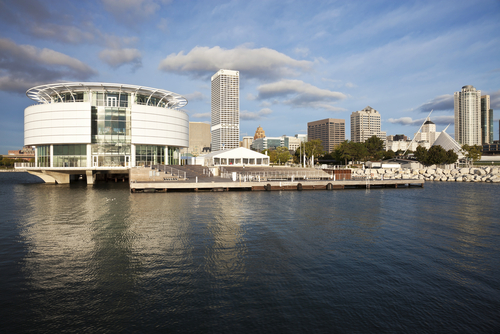EPA’s Strategy for Saving Our Urban Waters
 |
EPA’s Urban Waters program was created in alignment with the America’s Great Outdoors (AGO) Initiative launched by President Obama to reconnect people with conservation and outdoor recreation. While the Urban Waters program is not a regulatory program per se, it embraces a range of activities that may include existing regulations to successfully meet program goals.
The overall goal of the Urban Waters Program is to restore and protect urban waters by engaging diverse partners and communities in understanding these resources and providing stewardship. Specifically, the EPA sees the following as intended outcomes:
- Connection to urban waters—Increased public access to urban waterfront and increased public participation in waterfront activities like recreation, volunteer monitoring, cleanup events, education, and leisure.
- Understanding of urban waters and their potential—Increased public involvement in and awareness of urban waters and their potential for improving public health, economic development, and overall quality of life.
- Sense of public ownership of urban waters—Increased public benefit from water improvement activities, particularly in underserved communities, and as a consequence, increased priority given to the improvement of urban waters.
- Protection and restoration of urban waters—Acceleration of the measurable improvements to urban water quality.
- Community revitalization—Promote equitable community improvements that capitalize on the social and economic benefits realized when urban waters and adjacent lands are improved.
Need a SWPPP plan and don’t want to start from scratch? Get BLR’s Easy EHS Plan—Stormwater Pollution Prevention for Industrial Facilities Product. Learn more!
These outcomes will be achieved by:
- Aligning the EPA and federal government programs and investments in communities,
- Expanding partnerships,
- Building local capacity, and
- Finding innovative ways to communicate the environmental and economic development potential of safe and clean urban waters.
According to the EPA, the Urban Waters effort begins at the community level, where the EPA partners with local governments, agencies, the public, and other stakeholders like schools to share information, resources, ideas, and innovations. On the nonregulatory side, this may include:
- Identifying opportunities for communities to benefit from existing federal programs;
- Helping communities to develop comprehensive, integrated approaches to urban water issues and connect them to wider watershed planning and restoration activities;
- Providing funding from both current and possibly new initiatives;
- Providing educational materials, tools, and resources for communities and for schools;
- Informing stakeholders about current resources available from the EPA such as Internet-based tools and training opportunities;
- Developing partnerships with private sector business such as developers, home builders, architecture and engineering firms, and general contractors, to advance the goals of the initiative; and
- Other activities to encourage and facilitate voluntary urban water restoration.
Easy EHS Plan — Stormwater Pollution Prevention for Industrial Facilities
BLR’s Easy EHS Plan product is a simple yet complete solution. All the research has been done, and all the materials have been gathered in one place to help you build your own plan for your industrial facility. Find out more.
This is not to say that regulatory considerations are not part of the game plan. In fact, leveraging regulatory requirements and compliance are also key, including:
- Focusing Clean Water Act (CWA) compliance outreach, enforcement, and resources on urban areas, particularly underserved areas, including Supplemental Environmental Agreements, and targeting enforcement to the most serious contributors to water quality problems in urban areas;
- Ensuring that those responsible for maintaining municipal infrastructure are in, or on a path to, compliance with CWA and Safe Drinking Water Act (SDWA) requirements, including pretreatment programs; and
- Improving stormwater permits and guidance and targeting enforcement actions to address stormwater runoff issues in urban areas more effectively, such as promoting green infrastructure practices like infiltration and water reuse in urban environments.

Recent resarch has show that fresh or salt water has drops that are charged +. MIT has set up a labartory to study this effect.
We have investigated this effect as a way to get low cost fresh water from the oceans. We have designed, built, patented and operated a system of this type. It produces fresh water at a cost for less than $0.30 cents a gallon.
I can send you drawings and text about the system.